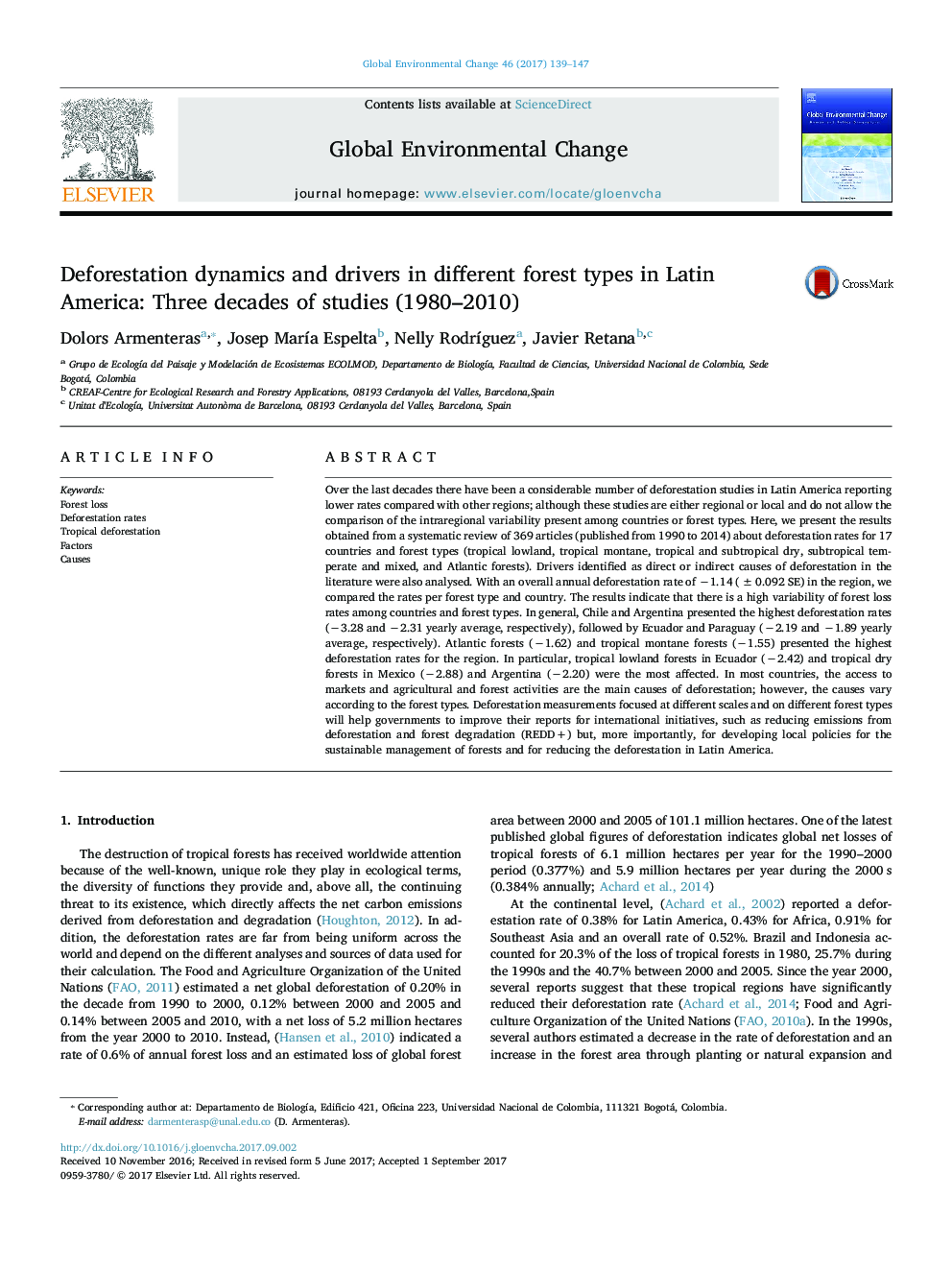| کد مقاله | کد نشریه | سال انتشار | مقاله انگلیسی | نسخه تمام متن |
|---|---|---|---|---|
| 5115890 | 1485112 | 2017 | 9 صفحه PDF | دانلود رایگان |
عنوان انگلیسی مقاله ISI
Deforestation dynamics and drivers in different forest types in Latin America: Three decades of studies (1980-2010)
ترجمه فارسی عنوان
دینامیک جنگل ها و رانندگان جنگل های مختلف در آمریکای لاتین: سه دهه مطالعات (1980-2010)
دانلود مقاله + سفارش ترجمه
دانلود مقاله ISI انگلیسی
رایگان برای ایرانیان
کلمات کلیدی
از دست دادن جنگل، نرخ جنگل زدایی، جنگل زدایی گرمسیری، عوامل، علل،
موضوعات مرتبط
علوم زیستی و بیوفناوری
علوم محیط زیست
علوم زیست محیطی (عمومی)
چکیده انگلیسی
Over the last decades there have been a considerable number of deforestation studies in Latin America reporting lower rates compared with other regions; although these studies are either regional or local and do not allow the comparison of the intraregional variability present among countries or forest types. Here, we present the results obtained from a systematic review of 369 articles (published from 1990 to 2014) about deforestation rates for 17 countries and forest types (tropical lowland, tropical montane, tropical and subtropical dry, subtropical temperate and mixed, and Atlantic forests). Drivers identified as direct or indirect causes of deforestation in the literature were also analysed. With an overall annual deforestation rate of â1.14 (±0.092 SE) in the region, we compared the rates per forest type and country. The results indicate that there is a high variability of forest loss rates among countries and forest types. In general, Chile and Argentina presented the highest deforestation rates (â3.28 and â2.31 yearly average, respectively), followed by Ecuador and Paraguay (â2.19 and â1.89 yearly average, respectively). Atlantic forests (â1.62) and tropical montane forests (â1.55) presented the highest deforestation rates for the region. In particular, tropical lowland forests in Ecuador (â2.42) and tropical dry forests in Mexico (â2.88) and Argentina (â2.20) were the most affected. In most countries, the access to markets and agricultural and forest activities are the main causes of deforestation; however, the causes vary according to the forest types. Deforestation measurements focused at different scales and on different forest types will help governments to improve their reports for international initiatives, such as reducing emissions from deforestation and forest degradation (REDD+) but, more importantly, for developing local policies for the sustainable management of forests and for reducing the deforestation in Latin America.
ناشر
Database: Elsevier - ScienceDirect (ساینس دایرکت)
Journal: Global Environmental Change - Volume 46, September 2017, Pages 139-147
Journal: Global Environmental Change - Volume 46, September 2017, Pages 139-147
نویسندگان
Dolors Armenteras, Josep MarÃa Espelta, Nelly RodrÃguez, Javier Retana,
